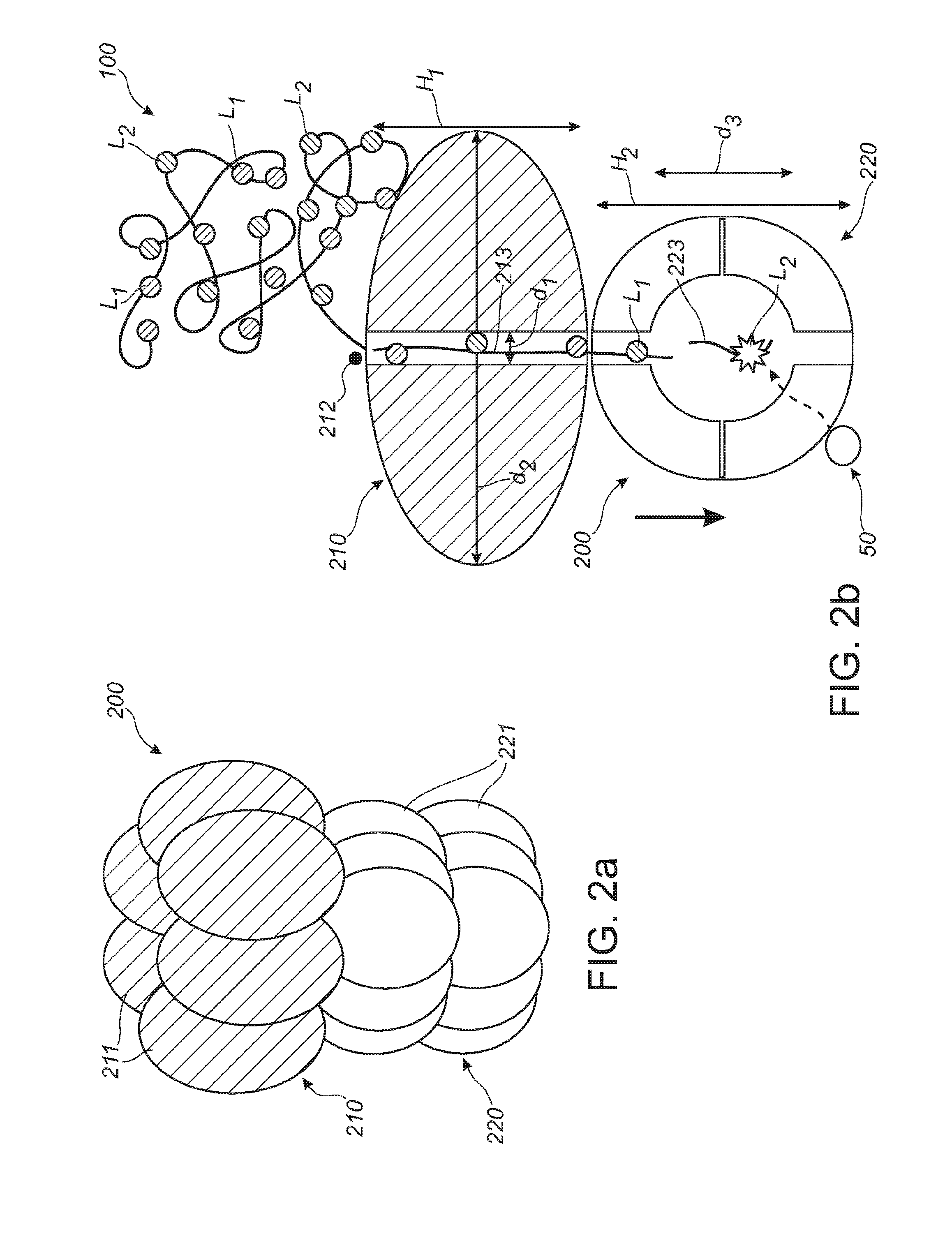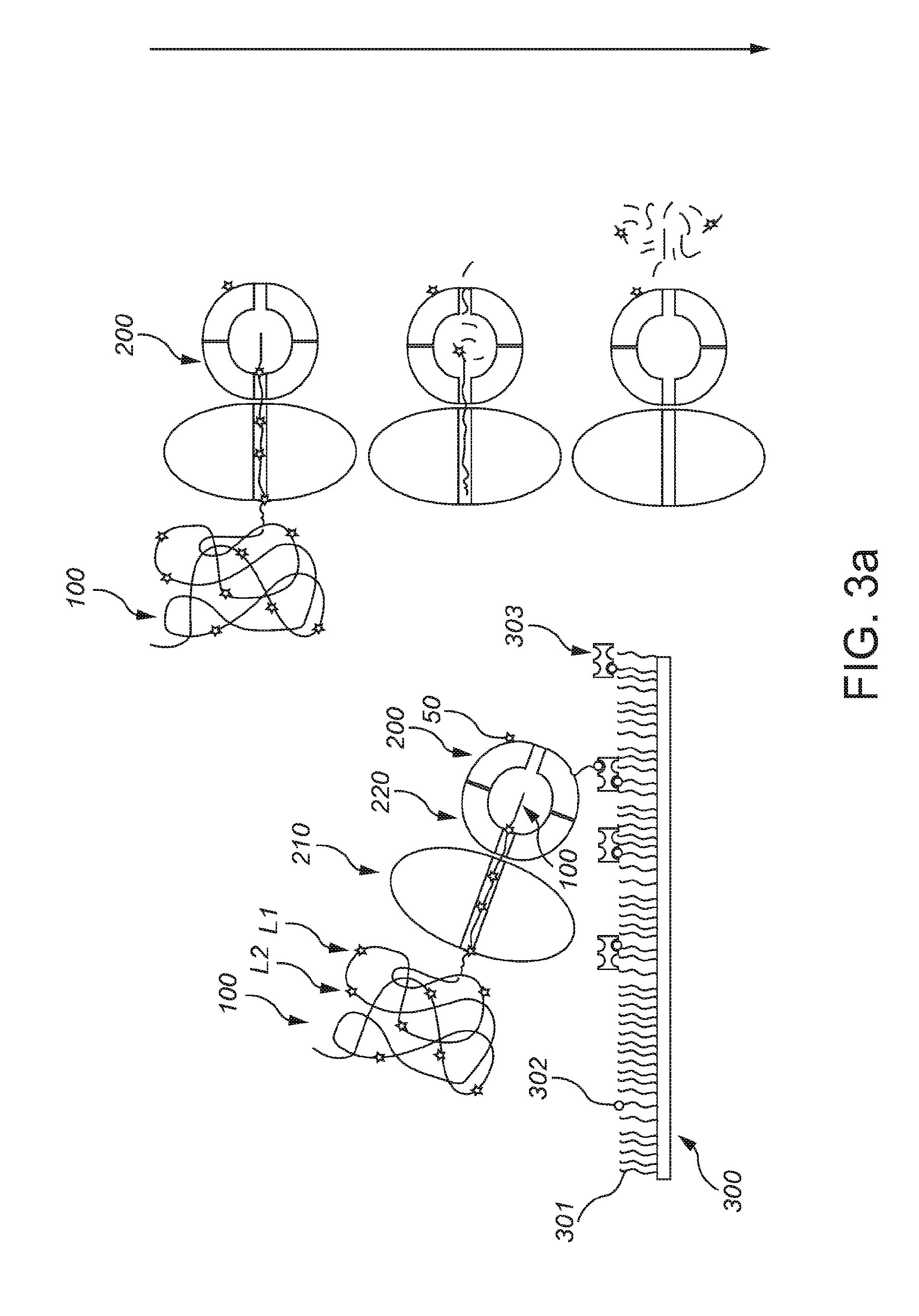Single molecule protein sequencing
a single molecule, protein technology, applied in the field of single molecule protein sequencing, can solve the problems of difficult to obtain large-scale proteomic information, inability to recognize minor species embedded among other dominant species, and inability to accurately predict sequences, etc., to achieve the effect of slowing down the clpx translocation speed, reducing the amount of atp energy available, and minimal ambiguity
- Summary
- Abstract
- Description
- Claims
- Application Information
AI Technical Summary
Benefits of technology
Problems solved by technology
Method used
Image
Examples
Embodiment Construction
[0065]FIG. 1a schematically depicts a protein, such as an enzyme. The protein is indicated with reference 100. The protein 100 essentially consists of a chain of amino acids 110. Amino acids 110 that are labeled, are indicated with references 111. Reference L1 indicates a first label and reference L2 refers to a second label (i.e. amino acids with label L1 and L2, respectively). As indicated above, especially two amino acids may be labeled, such as lysine (about 1 out of 20 amino acids) and cysteine (about 1 out of 40 amino acids). As indicated above, a protein can be identified from the order of e.g. C (Cys) and K (Lys) residues only.
[0066]FIG. 1b shows a calculation on the prediction power of the suggested method. The prediction fidelity is proportional to the number of C and K residues in a sequencing substrate. The fingerprinting becomes reliable when the number is larger than 15, such as least 16, like especially at least 17. Over 25, the prediction power is 100%. Note that the...
PUM
 Login to View More
Login to View More Abstract
Description
Claims
Application Information
 Login to View More
Login to View More - R&D
- Intellectual Property
- Life Sciences
- Materials
- Tech Scout
- Unparalleled Data Quality
- Higher Quality Content
- 60% Fewer Hallucinations
Browse by: Latest US Patents, China's latest patents, Technical Efficacy Thesaurus, Application Domain, Technology Topic, Popular Technical Reports.
© 2025 PatSnap. All rights reserved.Legal|Privacy policy|Modern Slavery Act Transparency Statement|Sitemap|About US| Contact US: help@patsnap.com



